Interviews, Photography, Products, Surf PhotographyA Guide to Getting Started at In-Water Surf Photography, with Damea Dorsey
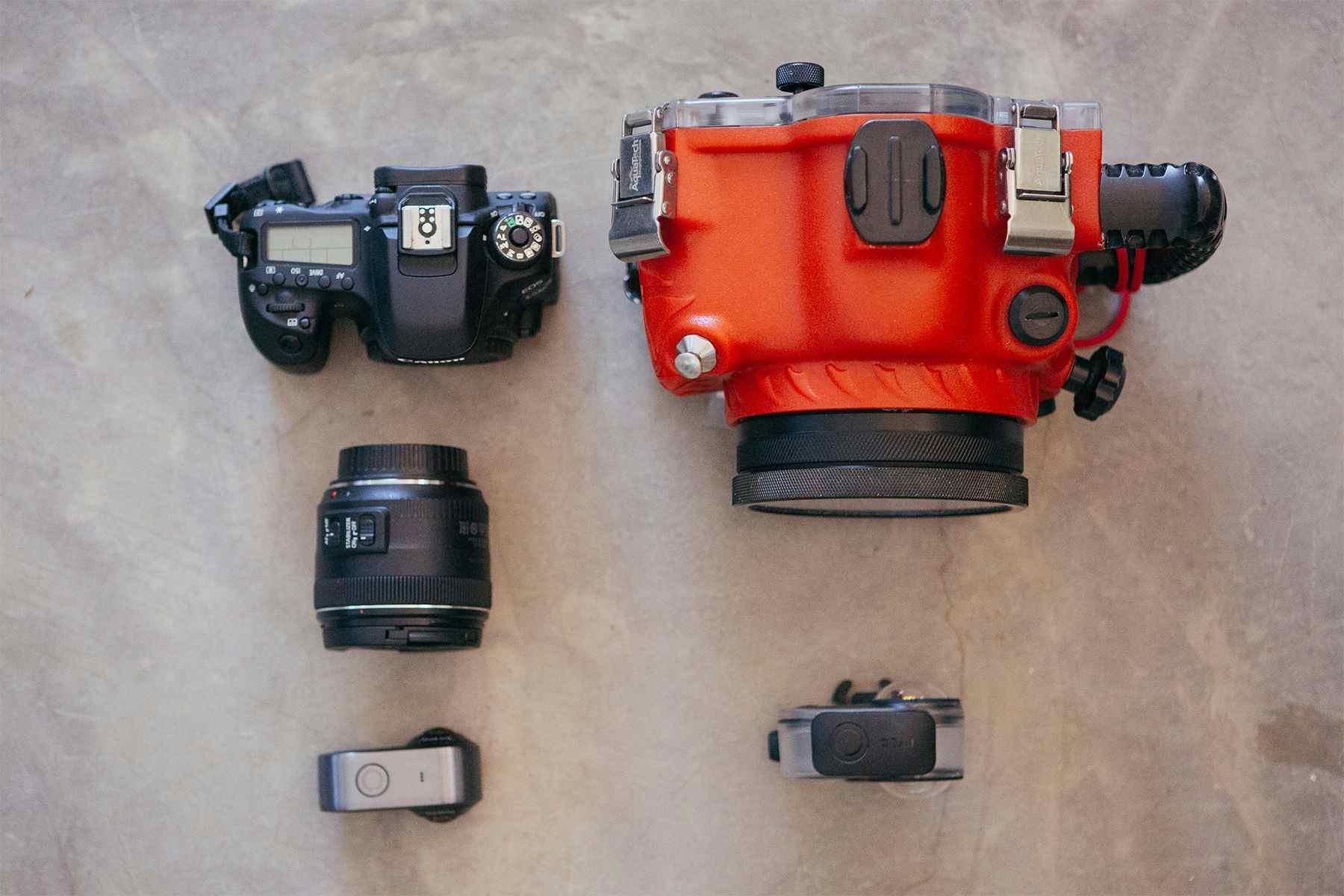
In-water surf photography was once the pursuit of the skilled few; those with enough ability swimming in the surf and the technical talent for shooting photos, just for starters. The pioneers and trail-blazers of in-water surf photography often had to construct their own water-housings to keep their camera equipment dry, assess conditions and set their camera accordingly before swimming out, shoot 36 frames and then swim back in to go through the painstaking process of changing the film before kicking back out to do it again. Over and over.
Thankfully, the advent of digital camera technology and increased availability of both commercially produced and custom-made camera housings has democratised surf photography. Now, countless surfers who get a taste for shooting photos in the surf (often via an introduction using a small waterproof POV camera; say hello to the Go-Pro generation) are able to get out and shoot incredible imagery to upload to Instagram.
We shoot a lot of photography and footage at the Surf Simply coaching resort in Costa Rica; at any one time there are three coaches filming from the beach and there are usually two photographers and a videographer swimming around capturing in-water footage. The team use a range of different cameras in different water-housings, and so when Surf Simply’s Ru Hill spent some time with leading lens-man Damea Dorsey in Indonesia last year and recorded an interview with him for the Surf Simply Podcast, it seemed like a fantastic opportunity to talk kit and get the opinion of one of the best in the game.
If you’re interested in getting into shooting surf photography from the water as a hobby, then read on for a run-down on the different options available to you.

Ru: So Damea, if one of our readers is wanting to get into shooting photography in the water just for fun, what kind of equipment – camera body, lens, and brand of housing should they go with? What’s a good starting point?
Damea: There’re a lot of options out there these days. Speaking as a professional, I’d say that you want to go with a brand and system that’s readily available, and that’s going to have a lot of housing options… For that, I would say Canon. I used Canon for probably twelve years solid, and can’t say anything negative about Canon’s products – they’re great; the cameras are tanks, and they’re technically perfect. Nikon is also right up there, and then after that I’ve been using Sony, just because I like the mirrorless cameras and the reduction in weight that they offer.
Ru: For our readers who might not be familiar with the digital camera marketplace, the Sony cameras are really leading the market in terms of mirrorless cameras, which means that they’re much smaller and much lighter.
Damea: Yeah. They’re maybe not as robust and hard-core as Nikon and Canon equipment, but they’re definitely making up for it in other areas such as the weight, and they’re really stepping up their game with providing a lot more lenses. They’re pushing for it – they want to get that market.
Ru: Would you say the Sony A6000 is a pretty good body for people to start with?
Damea: Actually it’s a great body for people to start with, because it’s not a very expensive investment for a camera body and it will do all of the basic things that you need it to do. I use that now in a professional capacity to get the job done. There’s the A6000, the A6300, and the A6500 which is the most up-to-date model and which retails at probably about $1500.
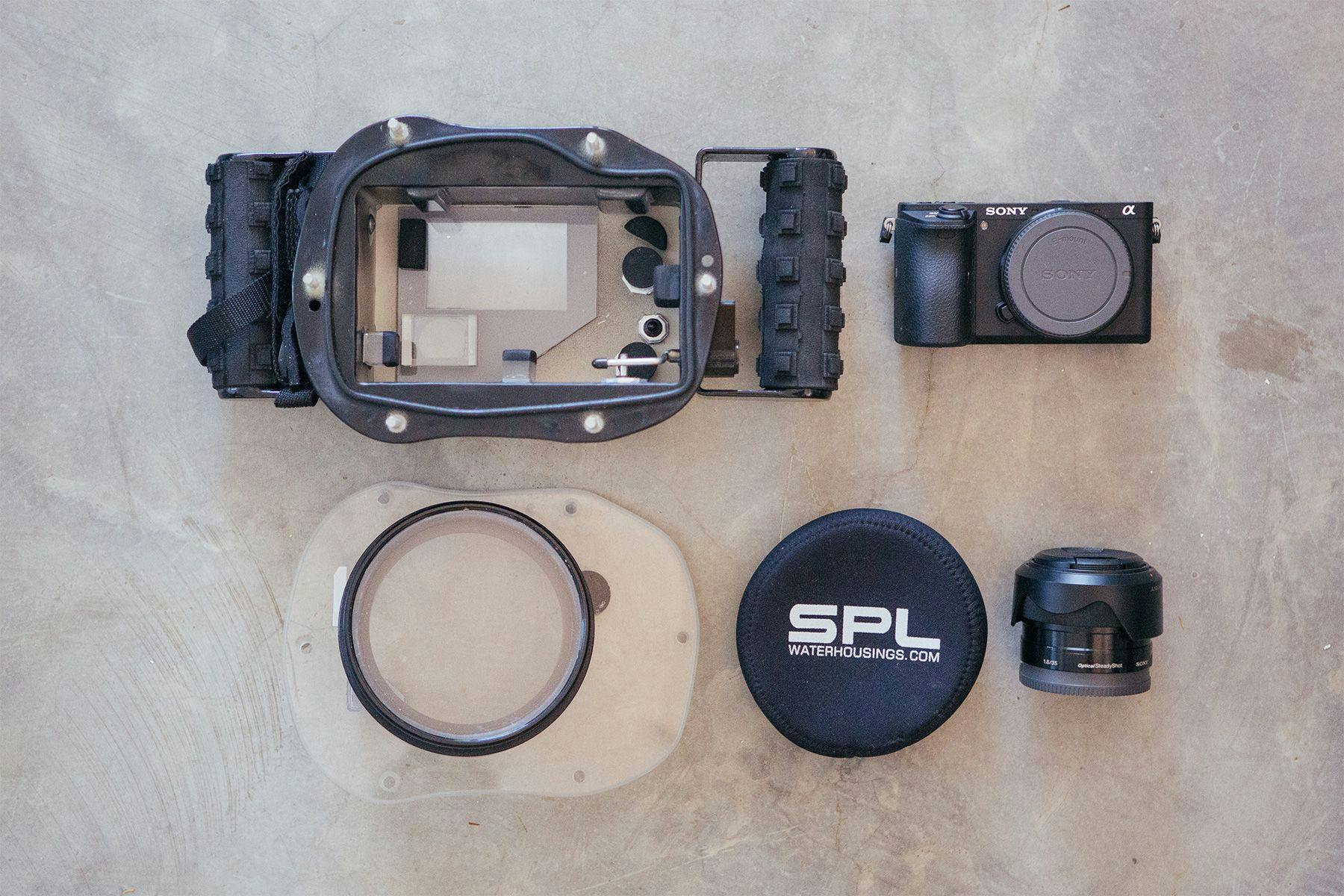
Ru: If they mirrorless Sony cameras are smaller and lighter, is it technical specifications such as the amount of photographs per second that they can shoot that they are lagging behind on?
Damea: No, that’s not the case. If you were to make a comparison, between the Canon 7D mk2 and the equivalent Sony (the A6500), they shoot about the same number of frames per second, right around 11-12fps. They both have a 2/3 crop sensor, and the quality of the images are exactly the same – they’re both top notch, producing great quality images. They’re similar in price, but the Canon 7D mk2 is more expensive and the difference really comes down to it having a more robust body. It’s a tank: you can pretty much throw that thing or drop it, then pick it up and it’ll still work. . If I threw my Sony or dropped it, then there’s a high chance that as a result it’s going to be broken. It’s just a little bit more flimsy – but technically it’s spot on.
Ru: And if you’re shooting in the water, would you say that a fixed 50mm prime lens is a good place to start?
Damea: Yeah. Any prime lens is a good call. I think that when someone’s starting out shooting in surf then it’s good to be far enough back that you can give yourself a little bit of time to be in the moment with your camera, looking at what’s going on and not worrying about what’s going on around you. A 50mm lens allows a photographer to do that a bit. It’s also a less of an investment – you can get a good 50mm prime lens for $125. It’s also a lower investment to you get a basic housing with a 50mm port, and that set-up can do a lot and look really good.

Ru: You were out the other evening with a fisheye lens. Can you talk about what lens you had and why you chose to use the fisheye?
Damea: The look with the fisheye for me is nice when you want to get really intimate with the wave and the surfer. Even without a surfer you can get in tight on a smaller wave and you’re right in there. When a surfer comes down the line and you get a picture of them it captures their interaction with the wave. It’s intimate; it’s up close, tight and interesting. It’s a very different look to a 50mm, and I like to seek a variety of looks and feelings with my lenses. Each lens provides a different feel.
Ru: So at the wave that you were shooting at the other day (that had a very small take-off spot and which was a very wedgy, round wave) you were able to take photos when it was barrelling and get the whole inside of the face and the lip throwing round, which you couldn’t do as you say in such an intimate way with the 50mm lens. And was that using a 16mm lens?
Damea: Yes. If you’re shooting with a Sony camera body then you could get the 16mm lens with a fisheye converter, or the newer 10-18mm f4 lens. That second option is expensive though – they keep coming out with these great lenses but they charge for it!
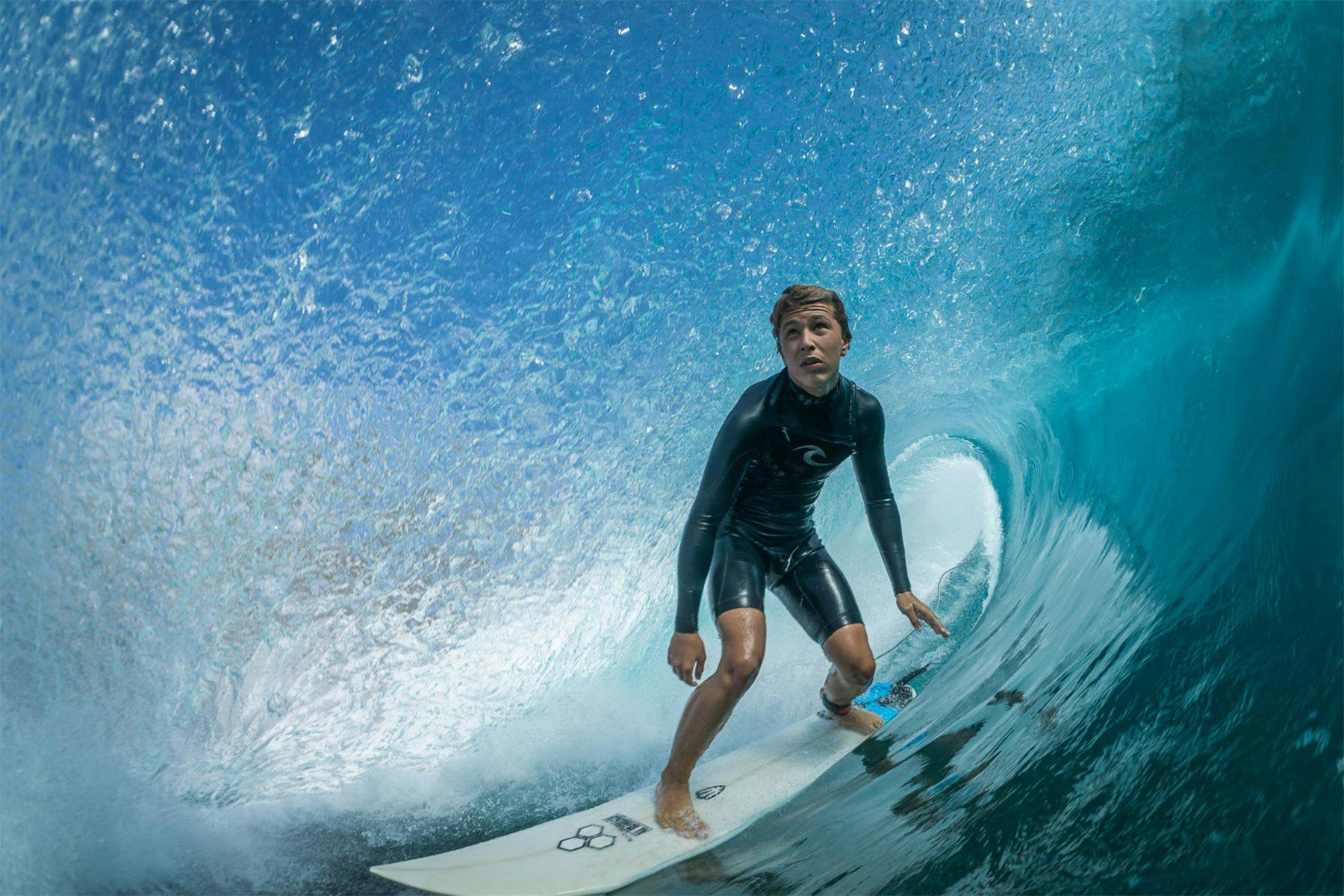
Ru: That’s one of the disadvantages with the Sony’s over the Canons: the lenses are pretty expensive.
Damea: Well…they used to be pretty comparable, but their latest lenses are substantially more expensive. I don’t know why, but they are. The technology’s there, they shouldn’t be so damned expensive, but they are. They’re good lenses, though: really sharp, really nice, and really well done. And these Carl Zeiss ones…I’m always trapped into getting the really crisp, clean, expensive lenses because if you do compare the two, then you can tell the difference. At the end of the day, if I’ve taken different lenses and compared them price-wise then at the end of the day it has always been worth the extra money – photo after photo after photo a better lens is going to pay itself back.
Ru: One thing that I quite like about lenses and about talking about lenses is that, unlike something vinyl that’s collectable but being usurped on a practical level by music streaming services that allow a DJ to select tracks by the speed or BPM, lenses aren’t going anywhere. Light still needs to be bent, and you have to have the space to do that. If you collect, over a lifetime, a series of lenses, they’re not going to be defunct like your vinyl collection might be.
Damea: True. And back in the beginning when we were talking about what to recommend and which direction to head, basically I’d say that any of those three camera companies – Sony, Canon and Nikon – if you go with one of them, to some degree you commit because when you start investing in all of those lenses they’re going to be around for ever. If you get a really good Canon 50mm 1.2 and another Canon lens and then another Canon lens, and then you buy a housing that works with Canon, then you’re locked in. You’re a Canon person. You can keep updating your camera bodies and stuff like that, but they only fit in so many housings and if every time you make a change you have to change everything – bodies, lenses and housings – it becomes very expensive.
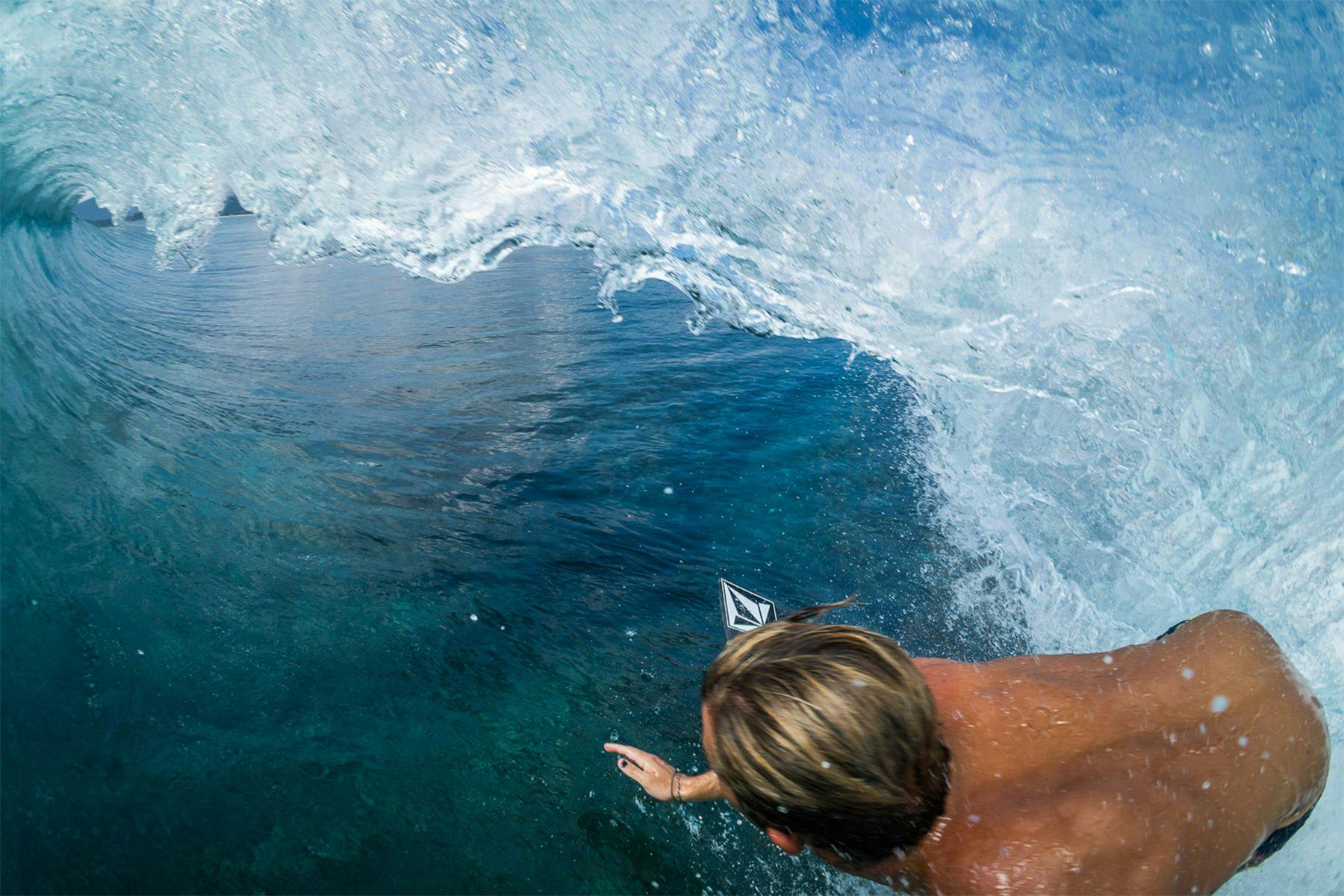
Ru: I get the feeling from the conversations that we’ve had that if you were starting from scratch and you were going to invest in one company, you’d probably go towards Sony nowadays?
Damea: Well, I was very invested in Canon, and there is nothing wrong with Canon – they’re great. But I had a break-in in my villa in Bali and all of my equipment was stolen. There was an issue with my insurance because I was out of town for more than the specified maximum amount of town and my insurer didn’t pay out so I lost like $30,000 worth of equipment and it caused me to re-evaluate things. I can be out of touch at times with what the latest technology is, but as soon as you dive in there you can get caught up really quick. What I found out was that the mirror-less technology was starting to gain traction; the technology was there, and companies like Sony were investing in it and moving forward with it. It looked like it was going to be the future, so I decided to take a risk and I went that route. Basically, I’d spent the last 15 years carrying around very, very heavy equipment and I was sick and tired of it. I was very easily swayed towards lighter, smaller equipment.
Ru: So, let’s say that our reader’s gone out and bought themselves a Sony A6000 or a Canon 7D, and then they’ve got a 50mm lens to start off with and then maybe they’ve got a 10-16mm lens for the wide angle shots. If you’re shooting somewhere that’s more of a big, rolling, open ocean sort of wave or a beachbreak where people are moving around a lot, you were saying that you might shoot with a 70-200mm lens, so a really long lens. Is 200mm about the biggest lens that you would shoot in the water with?
Damea: Yeah. With more and more people getting involved with shooting from the water, the housings have become substantially better, and there’re more options available. The 70-200 is one of my favourites, after a fisheye lens. With the 70-200 you’ve got quite a range, so it covers a lot of bases. If you get out in a line-up that’s like a soccer field of distance and someone’s getting a wave way over there, then it’s possible to zoom right into that surfer and it compresses the background, giving a really different look to a fisheye – way different – and different too to a 50mm.
Ru: I love the shallow depth of field that you get with those long lenses.
Damea: If you’ve got a really good lens then you can get a very shallow depth of field, and focus on a subject with the background getting blown out which looks amazing. But a long zoom lens just gives you a lot more ability to be in more places – not physically, but within that zoom you can zoom right up to where a surfer is way over there, and get a great photo. Maybe the action was so far away and you zoomed all the way in and still made it look like a pulled back photo, but you’ve covered such a vast distance with that lens in a short time; it’s great. And then, if somebody gets close you can pull it all the way back to 70 and you’re getting stuff in a much closer range. There can be problems with that, like in really wedgey, bendy waves, you often can’t see into the wave because it’s sucking out below sea level and so that’s where the shorter intimate lenses come into play and you have to get within that little wedge. If you’re shooting at an open point break that’s very visible, then you can be really far away, maybe even sitting on a bodyboard or surfboard, and getting a little bit of height to see those things from far away. Again, it’s just another point of view.

Ru: The last thing that I want to ask you about is housings. When I first got into it I just didn’t realise – and this will make you laugh – I didn’t realise that some housings were negatively buoyant and some were buoyant, and so I went and bought an Ikelite dive-housing, and the thing just sinks like a stone. Marine, our photographer at Surf Simply, was desperately trying to hold this thing out of the water whilst she swam. We’ve ended up going with Aquatech camera housings. Aquatech area a pretty good company to go with, but are there other companies that you’d recommend when shopping for a surf housing?
Damea: If you’re a very international person, travelling around the world a lot, it’s kind of the region that you need to focus on. In the US, it’s SPL and CMT water-housings probably – as a professional, they’re the biggest. If you were based in Australia then Aquatech would be the biggest. There’s a lot of crossover: Aquatech housings are available in the US and I know that SPL and CMT provide housings to a lot of Australian and European photographers as well. There’s a bunch more options out there, but in my opinion and for as long as I’ve been doing it, these three companies have been around the longest: SPL, Aquatech and CMT. Each offers something a little bit different, but they’re all very good at what they do. There’re other smaller brands that, if it’s convenient for you, are also very good. I use Salty Surf Housings now and they’re in Australia – it’s closer to where I’m based, the guy behind it is open to input from me and he’ll work with me, and it’s nice having that relationship with the person who’s building your kit so you can recommend alterations and that’s beneficial for them. If you’re a real professional and can give good advice, then that helps them and is useful. It’s also nice when you pick something up and you think, “I wish this just had this one other thing”, and I can actually go to him and ask if we can do that.
There’s a lot more options now, so you can go with whatever company you want and they’re all going to do a pretty good job.
Ru: Thank you very much, Damea!
Here’s what we use to shoot in-water surf photographs and footage at Surf Simply resort and for the magazine:

Marine (still photos)
Sony A6500, Sony FE 70-200mm F4 lens, Salty water-housing
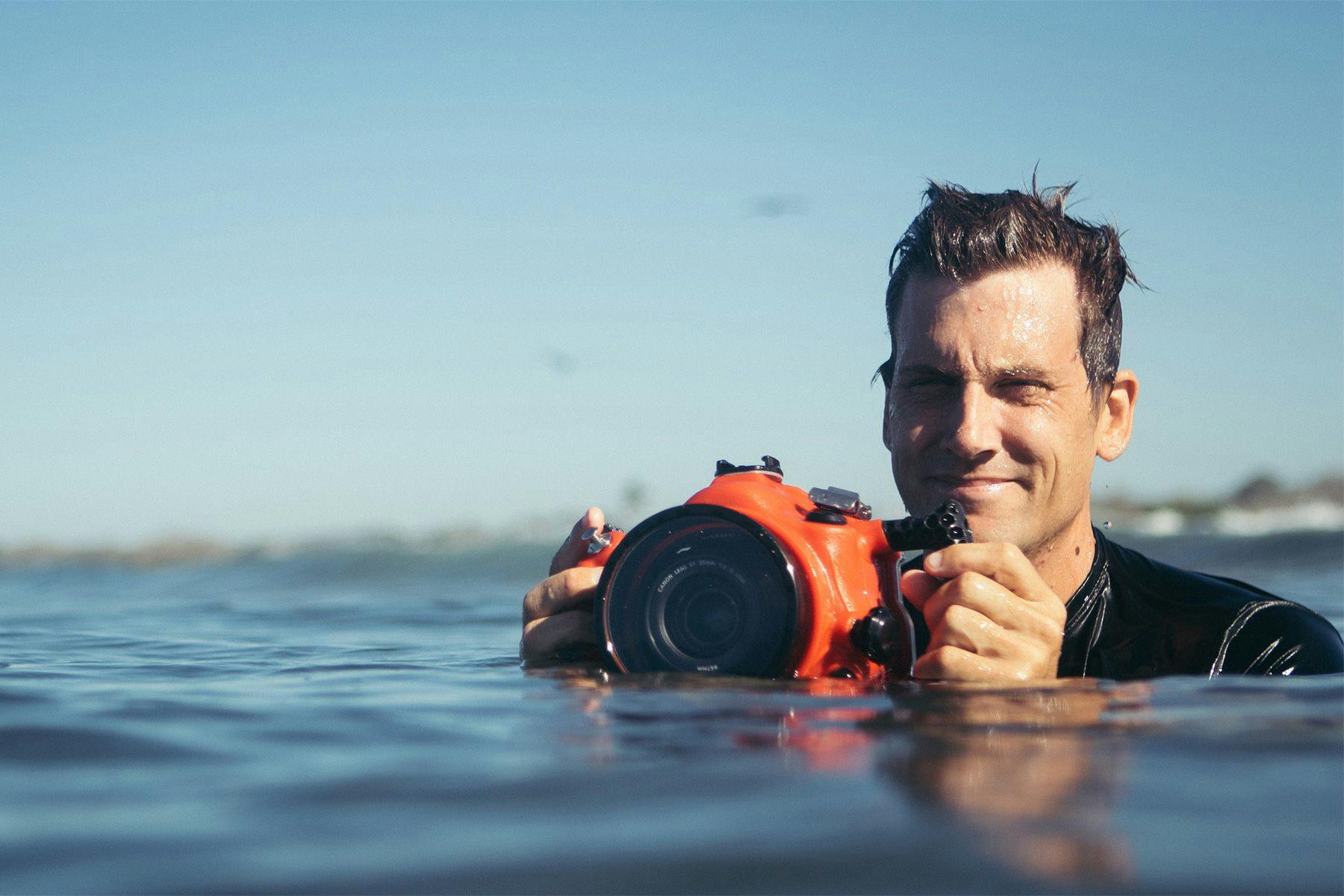
Harry (video)
Canon 80D, Canon 35mm f2.0 Prime lens, Aquatech water-housing

Ru (still photos)
Sony A6500, Sony 35mm Prime f/1.8 lens, SPL water-housing
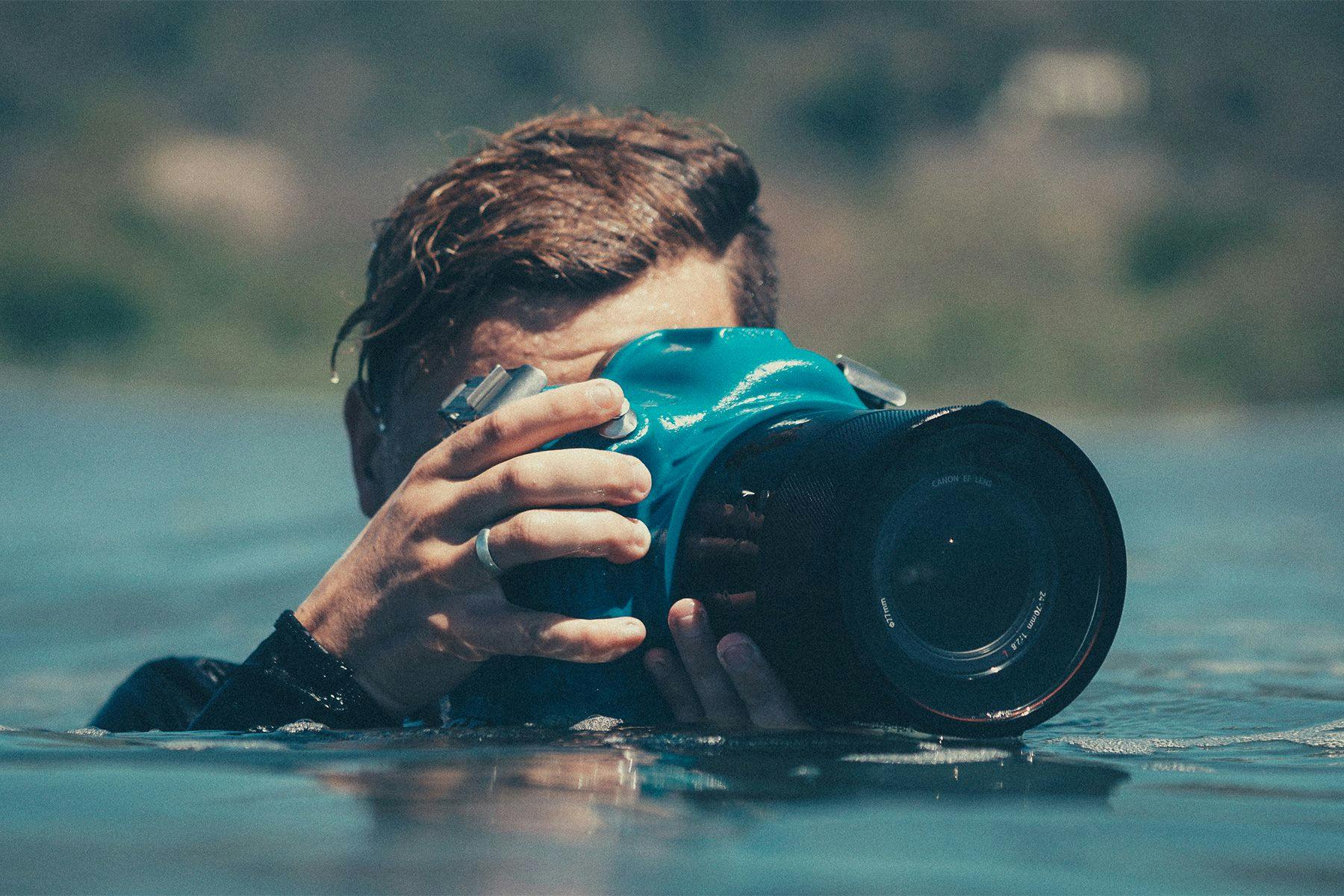
Callum (still photos)
Canon 7D ii and 5D iii, Canon 70-200mm f4 and Canon 24-70mm f2.8 lenses, Aquatech water-housing
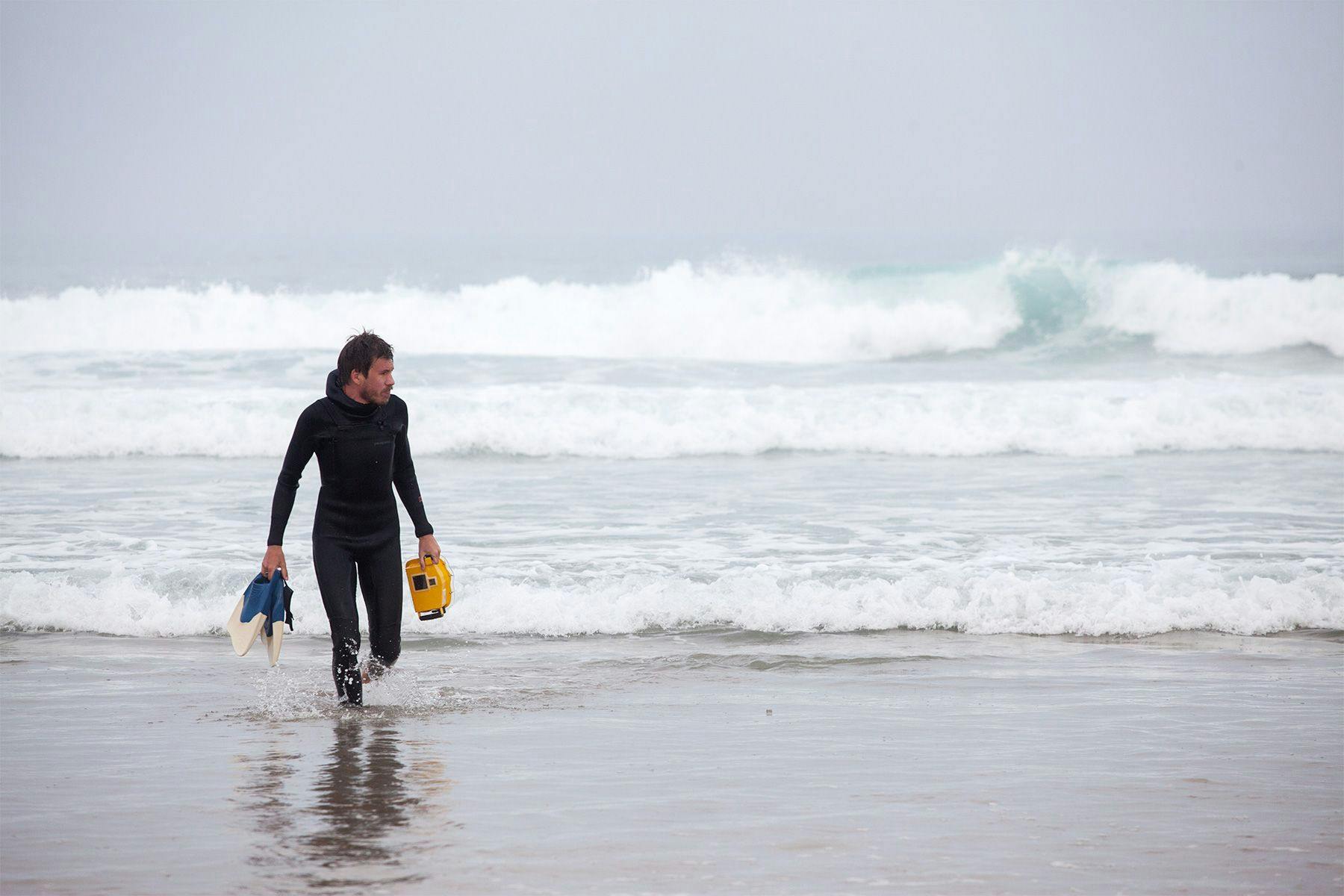
Mat (magazine)
Canon 7D, Canon 50mm f1.8 Prime lens, homemade water-housing